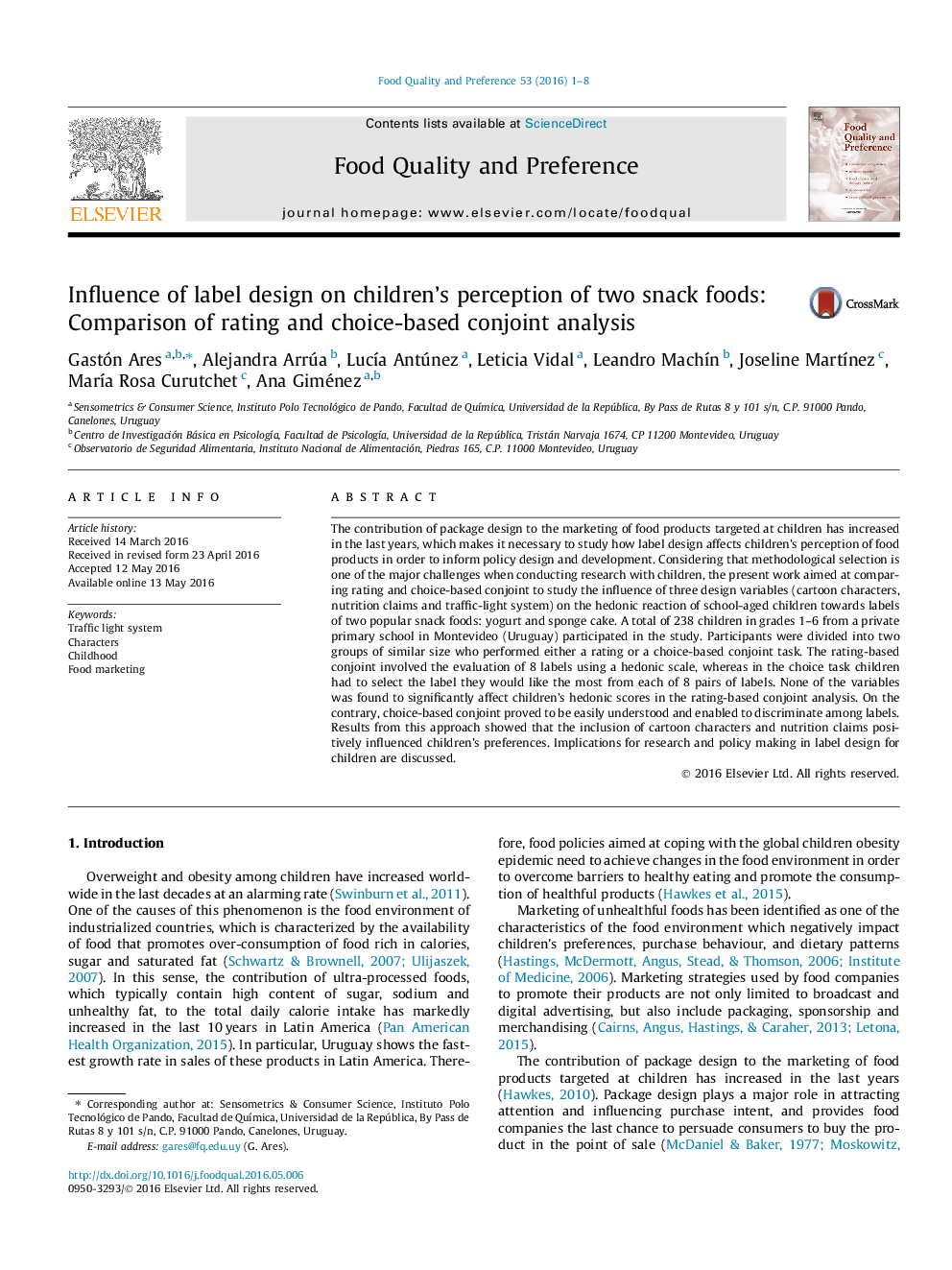| Article ID | Journal | Published Year | Pages | File Type |
|---|---|---|---|---|
| 4316877 | Food Quality and Preference | 2016 | 8 Pages |
•The influence of label design on school-aged children’s perception of snack foods was studied.•Rating-based conjoint was not able to significantly discriminate among labels.•Choice-based conjoint performed better and was easier to understand for children.•Cartoons and nutrient claims positively affected children’s preferences of yogurt and sponge cake.•Implications for research and policy making in label design for children are discussed.
The contribution of package design to the marketing of food products targeted at children has increased in the last years, which makes it necessary to study how label design affects children’s perception of food products in order to inform policy design and development. Considering that methodological selection is one of the major challenges when conducting research with children, the present work aimed at comparing rating and choice-based conjoint to study the influence of three design variables (cartoon characters, nutrition claims and traffic-light system) on the hedonic reaction of school-aged children towards labels of two popular snack foods: yogurt and sponge cake. A total of 238 children in grades 1–6 from a private primary school in Montevideo (Uruguay) participated in the study. Participants were divided into two groups of similar size who performed either a rating or a choice-based conjoint task. The rating-based conjoint involved the evaluation of 8 labels using a hedonic scale, whereas in the choice task children had to select the label they would like the most from each of 8 pairs of labels. None of the variables was found to significantly affect children’s hedonic scores in the rating-based conjoint analysis. On the contrary, choice-based conjoint proved to be easily understood and enabled to discriminate among labels. Results from this approach showed that the inclusion of cartoon characters and nutrition claims positively influenced children’s preferences. Implications for research and policy making in label design for children are discussed.
